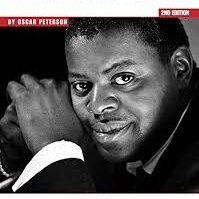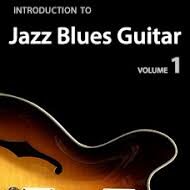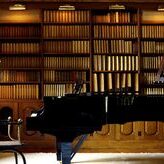Come join us now, and enjoy playing your beloved music and browse through great scores of every level and styles!
Can’t find the songbook you’re looking for? Please, email us at: sheetmusiclibrarypdf@gmail.com We’d like to help you!
Johannes Brahms: The 100 most inspiring musicians of all time
Johannes Brahms (b. May 7, 1833, Hamburg [Germany]—d. April 3, 1897, Vienna, Austria-Hungary [now in Austria]) was a German composer and pianist of the Romantic period, who wrote symphonies, concerti,
chamber music, piano works, choral compositions, and more than 200 songs. Brahms was the great master of symphonic and sonata style in the second half of the 19th century. He can be viewed as the defender of the Classical tradition of Joseph Haydn, Mozart, and Beethoven in a
period when the standards of this tradition were being questioned or overturned by the Romantics.
The Young Pianist and Music Director
The son of Jakob Brahms, an impecunious horn and double bass player, Johannes showed early promise as a pianist. He first studied music with his father. Between ages 14 and 16 Brahms earned money to help his family by playing in rough inns in the dock area of Hamburg and meanwhile composing and sometimes giving recitals. In 1850 he met Eduard Reményi, a Jewish Hungarian violinist, with whom he gave concerts and from whom he learned something of Roma (Gypsy) music—an influence that remained with him always.
The first turning point came in 1853, when he met the composer Robert Schumann, and an immediate friendship between the two composers resulted. Schumann wrote enthusiastically about Brahms in the periodical
Neue Zeitschrift für Musik, praising his compositions. The article created a sensation. From this moment Brahms was a force in the world of music, though there were always factors that made difficulties for him.
Chief among these factors was the nature of Schumann’s panegyric itself. There was already conflict between the “neo-German” school, dominated by Franz Liszt and Richard Wagner, and the more conservative elements, whose main spokesman was Schumann. The latter’s praise of Brahms
displeased the former, and Brahms himself, though kindly received
by Liszt, did not conceal his lack of sympathy with the self-conscious
modernists. He was therefore drawn into controversy, and most of the disturbances in his personal life arose from this situation.
Gradually Brahms came to be on close terms with the Schumann
household, and, when Schumann was first taken mentally ill in 1854, Brahms assisted Clara Schumann in managing her family.
Between 1857 and 1860 Brahms moved between the court of Detmold—where he taught the piano and conducted a choral society—and Göttingen, while in 1859 he was appointed conductor of a women’s choir in Hamburg. Such posts provided valuable practical experience and left
him enough time for his own work. At this point Brahms’s productivity increased, and, apart from the two Serenades for orchestra and the first String Sextet in B-flat Major (1858–60), he also completed his turbulent Piano Concerto No. 1 in D Minor (1854–58).
By 1861 he was back in Hamburg, and in the following year he made his first visit to Vienna, with some success; he settled in Vienna in 1863, assuming direction of the Singakademie, a fine choral society. There, despite a few failures and constant attacks by the Wagnerites, his music
was established, and his reputation grew steadily.
By 1872 he was principal conductor of the Society of Friends of Music (Gesellschaft der Musikfreunde), and for three seasons he directed the Vienna Philharmonic Orchestra.
In between these two appointments in Vienna, Brahms’s work flourished and some of his most significant works were composed. The year 1868 witnessed the completion of his most famous choral work, Ein deutsches
Requiem (A German Requiem), which had occupied him since Schumann’s death. This work, based on biblical texts selected by the composer, made a strong impact at its first performance at Bremen on Good Friday, 1868. With the Requiem, which is still considered one of the most significant
works of 19th-century choral music, Brahms moved into the front rank of German composers.
Brahms was also writing successful works in a lighter vein. In 1869 he offered two volumes of Hungarian Dances for piano duet; these were brilliant arrangements of Roma tunes he had collected in the course of the years. Their success was phenomenal, and they were played all over the
world.
In 1868–69 he composed his Liebeslieder (Love Songs) waltzes, which were for vocal quartet and four-hand piano accompaniment and incorporated Viennese dance tunes. Some of his greatest songs were also written at this time.

Maturity and Fame
By the 1870s Brahms was writing significant chamber works and was moving with great deliberation along the path to purely orchestral composition. In 1873, he offered the masterly orchestral version of his Variations on a Theme by Haydn. After this successful experiment, he felt ready to embark on the completion of his Symphony No. 1 in C Minor.
This magnificent work was completed in 1876 and first heard in the same year. Now that the composer had proved to himself his full command of the symphonic idiom, within the next year he produced his Symphony No. 2 in D Major (1877).
He let six years elapse before his Symphony No. 3 in F Major (1883). In its first three movements this work appears to be a comparatively calm and serene composition—until the finale, which presents a gigantic conflict of elemental forces. Again after only one year, Brahms’s last symphony, No. 4 in E Minor (1884–85), was begun. The symphony’s most important movement is once more the finale. Brahms took a simple theme he found in J.S. Bach’s Cantata No. 150 and developed it in a set of 30 highly intricate variations.
Gradually Brahms’s renown spread beyond Germany and Austria. Switzerland and The Netherlands showed true appreciation of his art, and Brahms’s concert tours to these countries as well as to Hungary and Poland won great acclaim. The University of Breslau (now the University of Wrocław, Poland) conferred an honorary degree on him in 1879.
The composer thanked the university by writing the Academic Festival Overture (1881) based on various German student songs. Among his other orchestral works at this time were the Violin Concerto in D Major (1878) and the Piano Concerto No. 2 in B-flat Major (1881).
By now Brahms’s contemporaries were keenly aware of the significance of his works, and people spoke of the “three great Bs” (meaning Bach, Beethoven, and Brahms), to whom they accorded the same rank of eminence. Yet there was a sizable circle of musicians who did not admit
Brahms’s greatness. Fervent admirers of the avant-garde composers of the day, most notably Liszt and Wagner, looked down on Brahms’s contributions as too old-fashioned and inexpressive.
Brahms remained in Vienna for the rest of his life. He resigned as director of the Society of Friends of Music in 1875, and from then on devoted his life almost solely to composition. When he went on concert tours, he conducted or performed (on the piano) only his own works. He maintained a few close personal friendships and remained a lifelong bachelor. During these years Brahms composed the Double Concerto in A Minor (1887) for violin and cello, the Piano Trio No. 3 in C Minor (1886), and the Violin Sonata in D Minor (1886–88). He also completed the first String Quintet in F Major (1882) and the second String Quintet in G Major (1890).
Final Years
In 1891 Brahms was inspired to write chamber music for the clarinet. He consequently composed the Trio for Clarinet, Cello, and Piano (1891); the great Quintet for Clarinet and Strings (1891); and two Sonatas for Clarinet and Piano (1894). These works are beautifully adapted to the potentialities
of the wind instrument.
In 1896 Brahms completed his Vier ernste Gesänge (Four Serious Songs), for bass voice and piano, on texts from both the Hebrew Bible and the New Testament, a pessimistic work dealing with the vanity of all earthly things and welcoming death as the healer of pain and weariness. The
conception of this work arose from Brahms’s thoughts of Clara Schumann, whose physical condition had gravely deteriorated. On May 20, 1896, Clara died, and soon afterward Brahms himself was compelled to seek medical
treatment, in the course of which his liver was discovered to be seriously diseased. He appeared for the last time at a concert in March 1897, and in Vienna, in April 1897, he died of cancer.
Aims and Achievements
Brahms’s music ultimately complemented and counteracted the rapid growth of Romantic individualism in the second half of the 19th century. He was a traditionalist in the sense that he greatly revered the subtlety and power of movement displayed by Haydn, Mozart, and Beethoven, with an added influence from Franz Schubert. The Romantic composers’ preoccupation with the emotional moment had created new harmonic vistas, but it had two inescapable consequences.
First, it had produced a tendency toward rhapsody that often resulted in a lack of structure. Second, it had slowed down the processes of music, so that Wagner had been able to discover a means of writing music that moved as slowly as his often-argumentative stage action. Many composers were thus decreasingly concerned to preserve the skill of taut, brilliant, and dramatic symphonic development that had so eminently distinguished the masters at the turn of the 18th and 19th centuries, culminating in Beethoven’s chamber music and symphonies.
Brahms was acutely conscious of this loss, repudiated it, and set himself to compensate for it in order to keep alive a force he felt strongly was far from spent. But Brahms was desirous not of reproducing old styles but of infusing the language of his own time with constructive power.
Thus his musical language actually bears little resemblance to Beethoven’s or even Schubert’s; harmonically it was much influenced by Schumann and even to some extent by Wagner. It is Brahms’s supple and masterful control of rhythm and movement that indeed distinguishes him from all his contemporaries. This power of movement stems partly from his reverence for music of the distant past, specifically for the polyphonic school of the 16th century, elements of which he incorporated into his work.
In his orchestral works Brahms displays an unmistakable and highly distinctive deployment of tone colour, especially in his use of woodwind and brass instruments and in his string writing, but the important thing about it is that colour is deployed, rather than laid on for its own sake. A
close relationship between orchestration and architecture dominates these works, with the orchestration contributing as much to the tonal colouring as do the harmonies and tonalities and the changing nature of the themes.
Brahms was peculiarly adapted to the more subtle aspects of the relation between orchestra and soloist, and he set himself to recover the depth and grandeur of the concerto idea.
He realized that the long introductory passage of the orchestra was the means of sharpening and deepening the complex relationship of orchestra to solo, especially when the time came for recapitulation, where an entirely new and often revelatory distribution of themes, keys, instrumentation,
and tensions was possible.
Brahms also was a masterly miniaturist, not only in many of his fine and varied songs but also in his cunningly wrought late piano works. As a song composer, he ranged from the complex and highly organized to the extremely simple, strophic type. His late piano music, most of which is of small dimension, has a quiet and intense quality of its own that renders the occasional outburst of angry passion the more potent.
Brahms’s musical range is finally attested by his choral music. A German Requiem, one of the choral masterpieces of its period, shows all his characteristics in this field together with an ability to integrate solo and tutti with the same kind of subtlety as in the concerti. The spaciousness
and grandeur of this work’s lines and the power of its construction
place Brahms’s underlying melancholy within thescope of a large, objective, nonreligious humane vision.
Download the best selections of classical music from our Library.
The Best of Brahms
Track List
1. Hungarian Dance No 1 In G Minor 2. Hungarian Dance No 3 In F Major 03:07 3. Hungarian Dance No 5 In G Minor 05:31 4. Hungarian Dance No 5 In F Sharp Minor 07:53 5. Hungarian Dance No 6 In D Major 08:56 6. Hungarian Dance No 7 In F Major 12:24 7. Hungarian Dance No 10 In F Major 13:52 8. Symphony No 4 In E Minor Op. 98 – Allegro Non Troppo 15:44 9. Symphony No 4 In E Minor Op. 98 – Andante Moderato 28:23
10. Symphony No 4 In E Minor Op. 98 – Allegro Giocoso 39:54 11. Symphony No 4 In E Minor Op. 98 – Allegro 46:14 12. Symphony No 3 In F Op. 90 – Allegro Con Brio 57:06 13. Symphony No 3 In F Op. 90 – Andante 1:06:25 14. Symphony No 3 In F Op. 90 – Poco Allegretto 1:14:59 15. Symphony No 3 In F Op. 90 – Allegro 1:21:33 16. Waltz In A Minor Op. 39 No 14 1:30:30 17. Serenade No 2 In A Op. 16 – Allegro Moderato 1:32:54 18. Serenade No 2 In A Op. 16 – Scherzo, Vivace 1:41:16 19. Serenade No 2 In A Op. 16 – Adagio Non Troppo 1:43:53
20. Serenade No 2 In A Op. 16 – Quasi Minuetto 1:53:35 21. Serenade No 2 In A Op. 16 – Rondò 1:58:24 22. Cradle Song Brahms’ Lullaby Op. 49 N.4 2:04:37 23. Cradle Song Brahms’ Lullaby Op. 49 N.4 – Piano Version 2:05:45 24. Cradle Song Brahms’ Lullaby Op. 49 N.4 – String Quartet 2:06:52
Browse in the Library:
Or browse in the categories menus & download the Library Catalog PDF:









